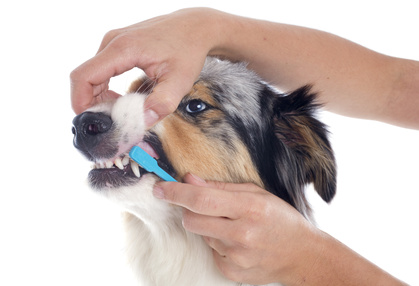Dental Treatment
A proper and complete approach is required to provide dental treatment in our pets – until recent years, the full extent of dental pathology was somewhat unknown and undiagnosed in our pets. But the introduction of premium dental equipment, thorough periodontal probing and a deeper understanding of different processes in dogs and cats, has led to a more comprehensive approach in all our dental cases. This is also in line with our practice core values of Excellence, Compassion and Integrity. Thus our dental treatment approach will encompass the following:
1. Full and complete dental exam
It is impossible to perform a complete dental exam in a conscious dog or cat. Whilst we can certainly get a picture of what may be happening, under anaesthetic we are able to examine each tooth from all sides.
2. Gum probing and checking for pathology
Probing under the gum tissue allows us to assess if there is any loss of gum attachment to the tooth. Cats are very prone to resorptive lesions (where the tooth enamel is simply eaten away/ resorbed, called FORLS) thus leaving areas that are similar to caries lesions in humans. These are extremely painful and cannot be reversed. The only form of treatment is unfortunately tooth extraction
3. Teeth Ultrasonic scale and polish
Once we have a complete picture of what is needed for your pet’s dental treatment, we usually will begin cleaning each tooth surface with an ultrasonic scaler. This removes all the tartar from the tooth surface. Polishing the tooth surface creates a smooth area making it more difficult for plaque to adhere to and thus delay further tartar formation.
4. Tooth Extractions if necessary
If necessary, teeth are then extracted and the sockets sealed either through suturing or a special dental fibre cement called Alvogyl. Reasons for tooth extraction are numerous but include abscess formation, FORLs, fractures, severe gum recession with root exposure and loose teeth. Extracting a dog or cat tooth is no simple matter as the roots are often 3X the depth or size of the crown (as opposed to our own teeth where the crown and root are similar size). What this generally means is that extraction is far more time consuming and complicated (especially in multi-rooted teeth). It may also mean, in the case of canine tooth extraction, that a surgical flap of gum tissue may be needed to properly close off the socket.
5. Developing a Dental Prevention Plan
Finally one of our vets or nurses will develop a preventative plan for your pet moving forward and they will go through this with you at discharge and by means of any information handouts. Dental care in our pets is becoming more and more important and there are various means we can embrace to achieve good dental and oral health for our pets.
As can be seen from the above, there is far more to proper and complete dental treatment than meets the eye. Nearly all dental treatments are done on an outpatient basis, i.e.. patients are admitted in the morning and are generally discharged that same afternoon or evening. On discharge any post-operative medication will be explained as well as any specific dietary changes as well as a preventative plan. A check-up is generally performed on any pet that has had extractions and this is done after 10-14 days.




